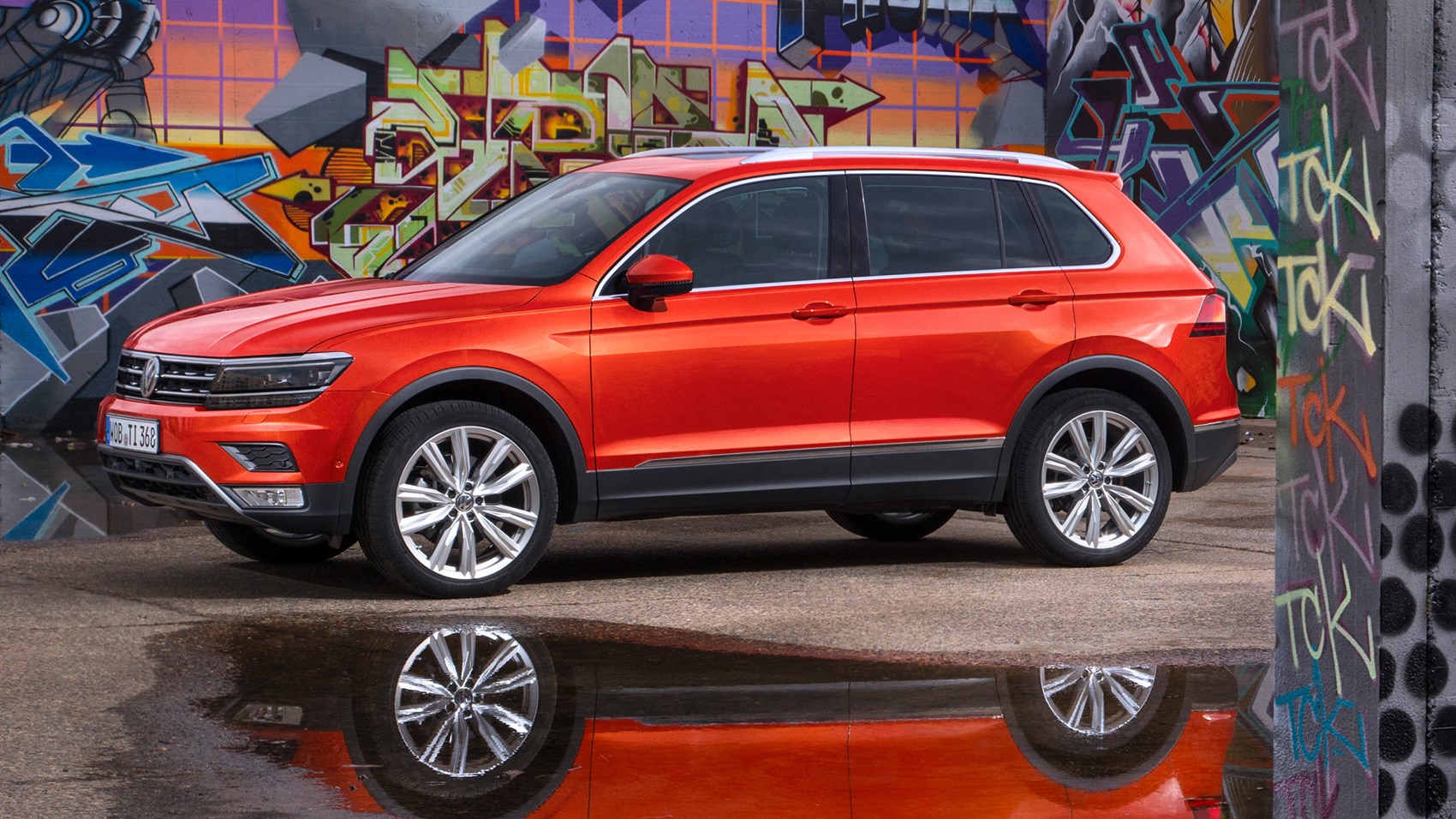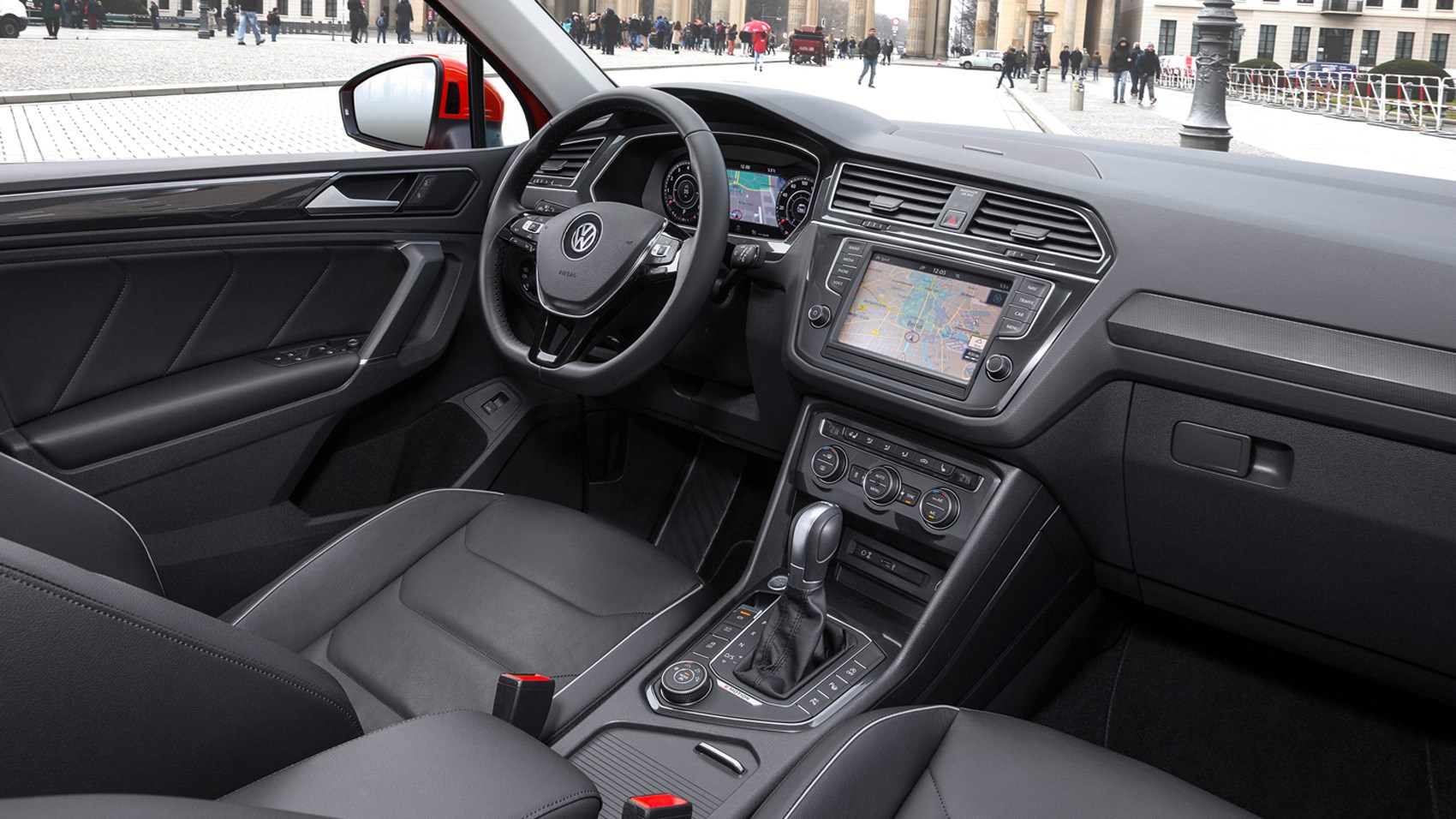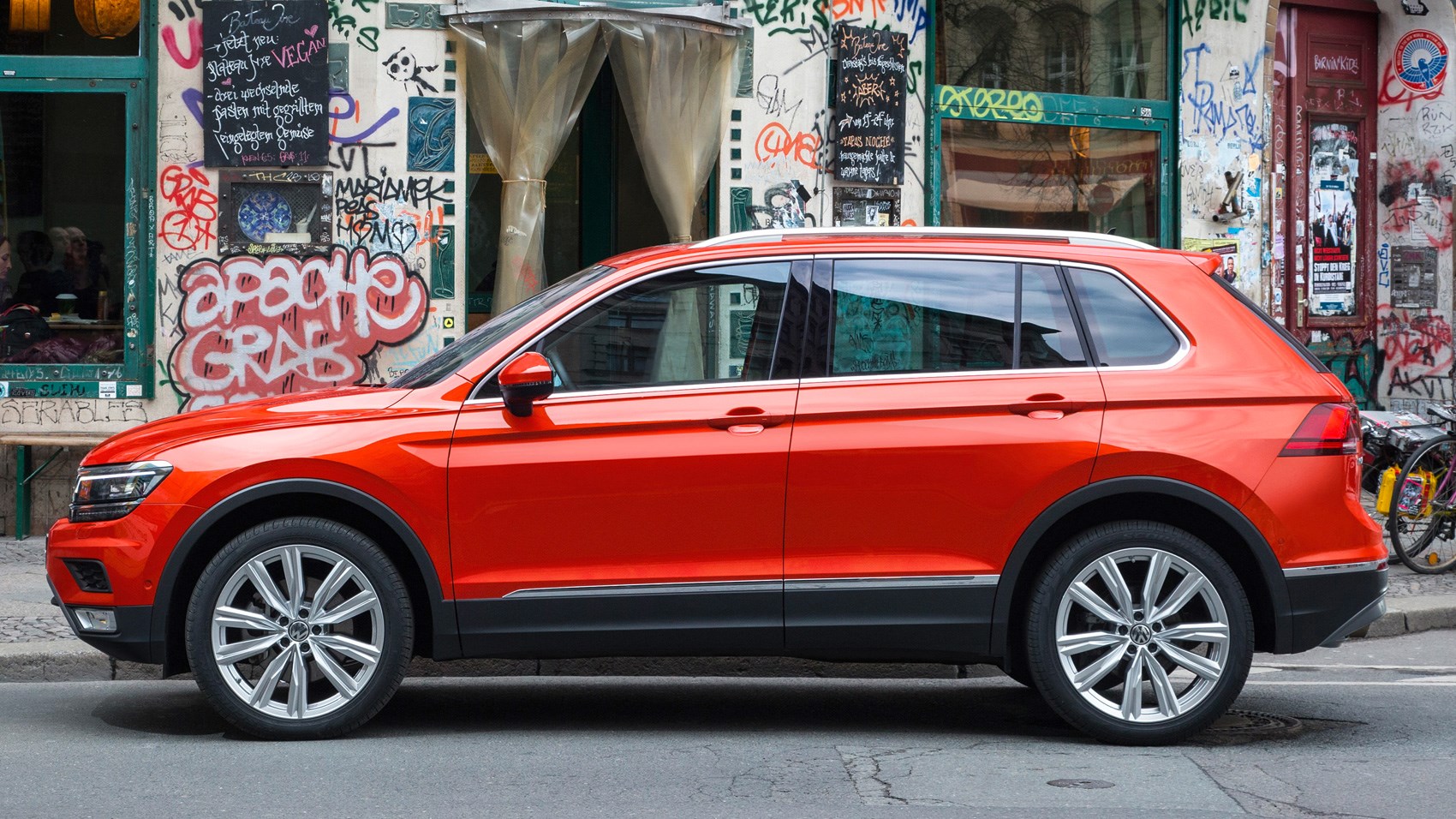► Most powerful diesel Tiguan tested
► Now available with 237bhp twin-turbo
► Is SEL trim a better buy than R-Line?
The new Volkswagen Tiguan debuted in June 2016, but we’re testing it here in just-launched 2.0 BiTDi trim.
It’s the most powerful turbodiesel engine to find its way into VW’s compact SUV, a 2.0-litre, twin-turbocharged four-cylinder promising 237bhp, 369lb ft, 44.1mpg and 167g/km. We’ve sampled it before in CAR’s longterm Passat.
For context, we’ve also got the next most powerful turbodiesel – the 2.0 TDI in 190, or 187bhp trim – on hand, with, yes, 187bhp, 295lb ft, 49.6mpg and 149g/km.
The BiTDi starts at £37,080, making it a £2400 upgrade over the 190 if the two are compared in like-for-like SEL or R-Line trim. The 190 model is, however, available in lower trim levels, where the BiTDi is available only in those top two trims.

Tell me a little more about the new Tiguan…
This is the second-generation of Volkswagen’s popular crossover – and the firm’s third best-seller after Golf and Polo. About 22,000 find homes a year in the UK, up from 8121 in 2011, an indication of how much the crossover segment has boomed over the past seven years.
The old car had been around for eight years, so this is no mild tickle: the Tiguan moves onto the modular MQB architecture, essentially the same highly flexible building blocks that underpin Golf, Passat and Touran.
Three petrol engines, four turbodiesels and five trim lines are available: S, SE, SE Navigation, SEL and R-Line. Entry-level S models get 17-inch alloys and an 8-inch touchscreen with DAB radio; R-Line models are distinguished by cloth/microfibre upholstery 20-inch alloys, and a unique bodykit – they look like very sporty cheese graters when viewed head-on.

What’s it like inside?
The dash architecture is as crisply contoured as the bodywork, the layout easy to navigate, the materials and fit and finish generally of a very high standard – though the carbon-fibre-style trim inserts do look a little cheap. The metal trim inserts in, say, a Mk6 Golf R were of a higher standard.
You also get Active Info Display, essentially Audi’s Virtual Cockpit by another name. Instead of analogue instruments, AID gives you a 12.3in TFT screen with a digital speedo and rev counter, but can be configured to your preferences eg a large sat-nav map can be positioned between speedo and rev counters. The information is clearly presented, and the configurability easy to adapt to. It’s available from SE models and up, and is fitted as standard to our test cars.
The front seats are quite firm without being uncomfortable, and offer acceptable support. There’s generous room in the back, with VW claiming 29mm more legroom than before: my kids are pretty cramped if they sit behind me in a Golf, but there’s room to spare in the Tiguan. The airplane-style tray tables with pop-out drinks holders that fold down from the seatbacks are a neat touch, but just make sure you’ve got your favourite valeter on speed dial.
The rear seats can move forwards and back by 180mm – 20mm more than the old model – to flex the legroom/cargo space ratio, and you can drop the rear bench with the pull of an easily accessed handle in the boot. Do that and you’ll have 1655 litres of space to fill, 145 litres more than the previous model. Deep storage bins front and rear add to the family-friendly versatility.
How does the new powertrain perform?
It’s a very impressive unit, and one of the more refined four-cylinders out there. 369lb ft at 1750rpm brings appreciably more low-down flexibility than the 190 model (295lb ft @ 1750rpm), but it’s at mid- to high revs that you really reap the benefits: it feels so much more energetic during overtakes, surfing an easy wave of boost where it feels like you’re flogging the 190 to unleash less performance, which you are. That’s not to say the 190 is bad, it’s just shown up by this comparison.
The seven-speed DSG gearbox is fitted as standard to both cars (a six-speed DSG is offered on other specs) and proved a little underwhelming: it thunks when cold, doesn’t shift gears as fast as you might expect, and the calibration doesn’t feel quite right. Drive is too dopey, Sport mostly right, if inevitably too hyper during urban driving. The Stop/Start system can also be infuriatingly slow to wake up after a stop at the traffic lights.

What about the rest of the drive?
Our BiTDi came in SEL trim with adaptive dampers, while the 190 was in full R-Line trim with fixed-rate sports suspension and 20-inch alloys. Both are all-wheel drive as standard.
It proved an interesting comparison: the R-Line handles tidily, contains its height and weight with limited roll, and carves through roundabouts with grip and enthusiasm. The trade off is a firm ride. It’s far from unpleasant, but more compliance would be welcome, and it’s at odds with a comfortable, do-it-all family car – the kids’ Happy Meals will be bouncing all over those fold-down trays.
The SEL didn’t look as desirable, but its 19-inch wheels and adaptive suspension were a better compromise. There’s noticeably more roll, less manic grip, but progress is more fluid, the ride more compliant, and it’s still a perfectly good drive.
In both cases, you grip a thin-rimmed leather steering wheel, which feels accurate and linear, if a little sterile in the way it communicates road-surface detail.
Verdict
The Tiguan BiTDi is a very impressive car, offering sharp looks, great build quality and high levels of family practicality. It’s even quite good to drive. The additional 50bhp over the next most powerful turbodiesel transforms the power delivery, making it feel eager and effortless, and with a much stronger top end. Whatever the output, a better calibration for the seven-speed DSG transmission would be welcome.
In R-Line trim, the Tiguan looks extremely desirable with its 20-inch alloys and bodykit, and handles very well on sports suspension. The trade-off is a firm ride, something a little out of kilter with such a practical, useable family car. For us, our BiTDi represents the best combination: SEL spec with 19-inch alloys and DCC adaptive dampers.